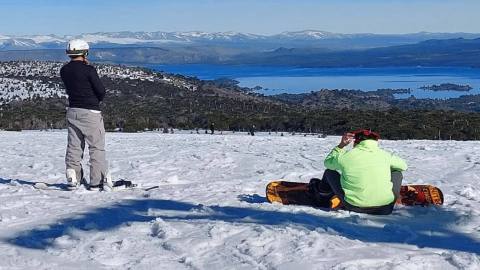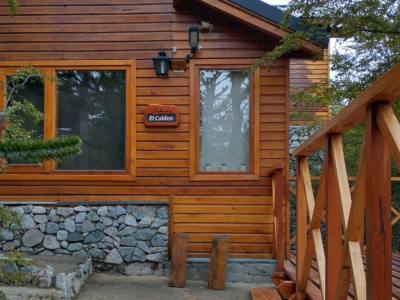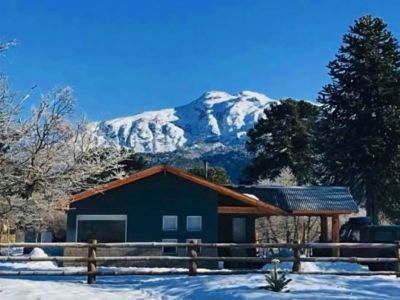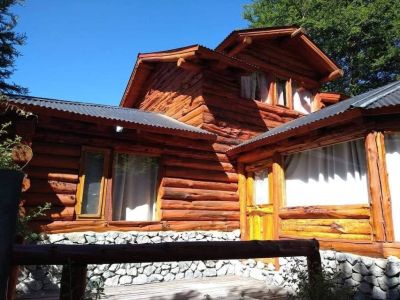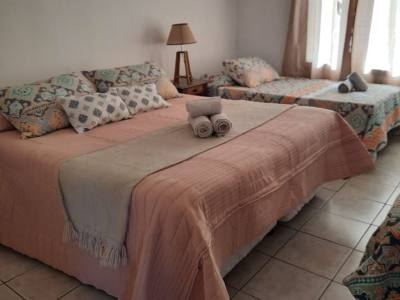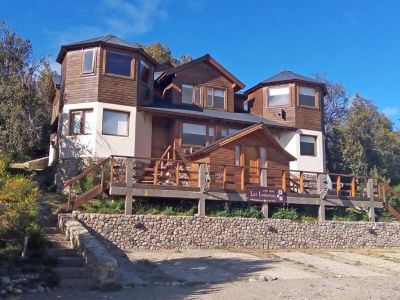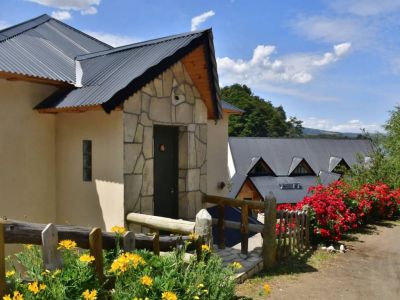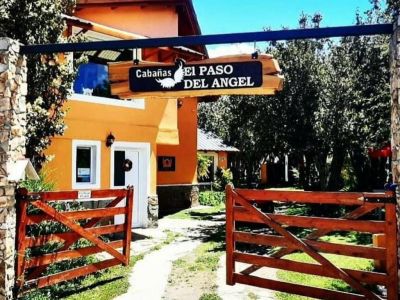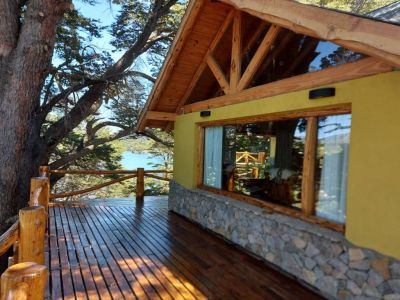
We rode snow sleds pulled by Samoyed dogs. We enjoyed this ancestral experience amid a forest of monkey puzzles and stunted ñires.
Guillermo Luna is 23 years old. As a child, his father bequeathed him his passion for the raising of sled dogs, being the samoyed his favorite breed. When he was just seven years old, he used to organize various wheel sled races, pulled by Samoyed dogs in Hurlingam, where he used to live. With the passing of time, his continuous interest in this ancestral activity led him to specialize, thus forming the first Argentinian sled team to have Samoyed dogs. “They are proud dogs” –he explained, as we tasted a delicious cup of hot chocolate, listening to his fantastic story, in his present home at Moquehue, fifteen kilometers from
Villa Pehuenia.The tourist awakening of the country and the possibility to develop this activity with greater assiduity helped him make up his mind and settle down around these Patagonian latitudes with his mother and his girlfriend, and thus work in the field he likes so much: making excursions with snow sleds. In love with this particular dog breed, he explained that its name comes from the Samoyed tribes from the North of Russia and Siberia. “They were used for herding reindeer, pulling sleds and also for hunting. They are friendly, open, always alert and they have amazing strength. It is a very sociable dog and its hunting instinct is quite soft; therefore, it is advisable to use it as a guard dog.” –he ended his description and immediately invited us to see them. We went out of the house. An albino and bright environment made us forget about the cold weather. We wanted to go on a sled ride and enjoy the experience. Gustavo started to “dress” some Samoyed dogs. Meanwhile, I started to stroke them and watch their characteristics. They are middle-sized elegant Arctic Spitz. They give the impression of strength, endurance, flexibility, grace, dignity and self-confidence. Their expression, usually called “Samoyed smile” results from the combination of the shape and position of their eyes and their mouth slightly curved upwards.

Once the harnesses and sunshades were on, we learnt that the dog in front is called the lead dog, and the ones at the back are called “wheel dogs”. The latter are the ones pulling harder. The special feature of sled rides organized by Gustavo is that they teach interested people how to handle the sled and they end up guiding the sleigh. We learnt the words of command –Shi: right, Ja: left, Osh: fast, Easy: slow and, the most important, Go: to start – and almost without noticing, we were enjoying the ride in the middle of the forest of monkey puzzles and stunted ñires. We went across most of the El Marcial Valley, located in the Pulmarí area. Feeling the power of these dogs, the energy and their commitment with pulling the sled is an unforgettable experience. The lead dog, which commanded the rest of the dogs, paid extreme attention to our orders, leading us successfully along the path. I soon moved apart from Gustavo and started to feel only the sound of the sled sliding on the snow. I reached a hill where I decided to stop in order to watch the beautiful panoramic view of Lake Moquehue. The Samoyed dogs took the opportunity to rest for a moment while Gustavo was running to me. We both resolved to continue the tour together. I learnt about the local flora and fauna and about the history locked inside this legendary activity. On our way back, the dogs seemed to realize that our tour was coming to an end, as in unison, among barks and howls, they seemed to recover their ancestral strength to reach the starting point as soon as possible. Once at Gustavo’s house, the dogs were quickly rewarded for their task with a dose of delicious dog food and fresh spring water. While they were eating, we said goodbye to the family who, from Hurlingam to Moquehue, assumed to the task to spread this pleasant activity.


 Once the harnesses and sunshades were on, we learnt that the dog in front is called the lead dog, and the ones at the back are called “wheel dogs”. The latter are the ones pulling harder. The special feature of sled rides organized by Gustavo is that they teach interested people how to handle the sled and they end up guiding the sleigh. We learnt the words of command –Shi: right, Ja: left, Osh: fast, Easy: slow and, the most important, Go: to start – and almost without noticing, we were enjoying the ride in the middle of the forest of monkey puzzles and stunted ñires. We went across most of the El Marcial Valley, located in the Pulmarí area. Feeling the power of these dogs, the energy and their commitment with pulling the sled is an unforgettable experience. The lead dog, which commanded the rest of the dogs, paid extreme attention to our orders, leading us successfully along the path. I soon moved apart from Gustavo and started to feel only the sound of the sled sliding on the snow. I reached a hill where I decided to stop in order to watch the beautiful panoramic view of Lake Moquehue. The Samoyed dogs took the opportunity to rest for a moment while Gustavo was running to me. We both resolved to continue the tour together. I learnt about the local flora and fauna and about the history locked inside this legendary activity. On our way back, the dogs seemed to realize that our tour was coming to an end, as in unison, among barks and howls, they seemed to recover their ancestral strength to reach the starting point as soon as possible. Once at Gustavo’s house, the dogs were quickly rewarded for their task with a dose of delicious dog food and fresh spring water. While they were eating, we said goodbye to the family who, from Hurlingam to Moquehue, assumed to the task to spread this pleasant activity.
Once the harnesses and sunshades were on, we learnt that the dog in front is called the lead dog, and the ones at the back are called “wheel dogs”. The latter are the ones pulling harder. The special feature of sled rides organized by Gustavo is that they teach interested people how to handle the sled and they end up guiding the sleigh. We learnt the words of command –Shi: right, Ja: left, Osh: fast, Easy: slow and, the most important, Go: to start – and almost without noticing, we were enjoying the ride in the middle of the forest of monkey puzzles and stunted ñires. We went across most of the El Marcial Valley, located in the Pulmarí area. Feeling the power of these dogs, the energy and their commitment with pulling the sled is an unforgettable experience. The lead dog, which commanded the rest of the dogs, paid extreme attention to our orders, leading us successfully along the path. I soon moved apart from Gustavo and started to feel only the sound of the sled sliding on the snow. I reached a hill where I decided to stop in order to watch the beautiful panoramic view of Lake Moquehue. The Samoyed dogs took the opportunity to rest for a moment while Gustavo was running to me. We both resolved to continue the tour together. I learnt about the local flora and fauna and about the history locked inside this legendary activity. On our way back, the dogs seemed to realize that our tour was coming to an end, as in unison, among barks and howls, they seemed to recover their ancestral strength to reach the starting point as soon as possible. Once at Gustavo’s house, the dogs were quickly rewarded for their task with a dose of delicious dog food and fresh spring water. While they were eating, we said goodbye to the family who, from Hurlingam to Moquehue, assumed to the task to spread this pleasant activity. 







